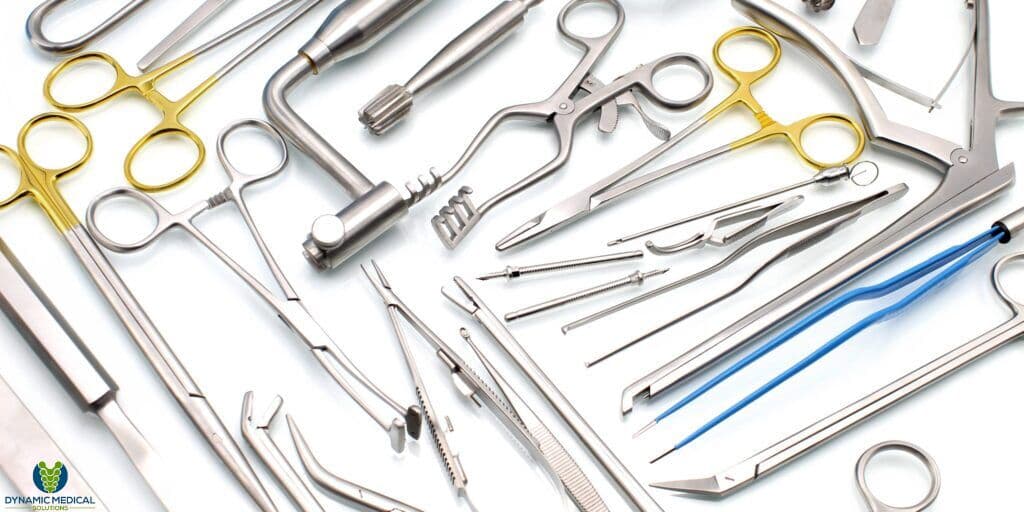
Exploring the Realm of Surgical Instruments with Names
The history of surgery is outdated. With the evolution of humans, the trend of inventing useful tools started. Stone, iron, and wood.
The history of surgery is outdated. With the evolution of humans, the trend of inventing useful tools started. Stone, iron, and wood were extensively used for daily chores. People used to make small handmade instruments for the cure of diseases. With time, this trend of making small medicinal tools evolved into the field of science and technology. Scientists began to invent cutting-edge instruments for medicine. And a separate category of surgical instruments came into existence.
Nowadays surgical instruments are user and environment-friendly. They occupy less space and take less time for the treatment. They are defined as exclusively developed instruments for the diagnosis and treatment of any kind of illness. They differ in size, shape, design, and cost. They may be self or human-operated. They are manufactured worldwide by different companies with different costs and variety.
They can be classified based on their purpose, location of diagnosis, size range, and design nature. Here we will discuss their major categories with examples:
-
Distention and Examination Instruments: These instruments are for the general overview or diagnosis of the disease. They include:
- Scopes: This surgical instrument is used for the examination of organs and cavities.
- Example: Stethoscope.
- Scopes: This surgical instrument is used for the examination of organs and cavities.
-
Specialty Instruments: They are intended for a specific field of surgery. They include:
- Dental Instruments: Especially for holding or removing strong teeth or bones
- Physiotherapy instruments: They are used to support bones and muscles.
- Neurological instruments: They are used for brain surgery.
- Examples: dental elevators, heating pads, and neurological hammers.
-
Clasping and Holding Instruments: They are for a supportive role. Despite their modest size, they have a huge role. They include:
- Clamps: They are used to hold soft tissues or other instruments.
- Needle Holders: They are used for holding needles during suturing.
- Forceps: They are used to grasp tissue.
- Examples: Mayo Hegar needle holder, tissue forceps, and holding clamp.
-
Retracting and Disclosing Instruments: These are the surgical instruments that are used for the maintenance of the site of operation. They hold or disclose any soft or hard tissue of the body.
- Retractors: They are used to hold back tissues and organs during operation.
- Specula: They are used to dilate a body cavity.
- Examples: Mason Judd retractor and ear specula.
-
Incising and Dissecting Instruments: They are mainly to cut the point of surgery. They include:
- Scissors: They are used for cutting soft tissues or hard ligaments.
- Scalpels: They are Small pointed knives used for making incisions.
- Curettes: They are used for removing extra tissue from a surface.
- Examples: Operating scissors, Parker delicate scalpels, and sinus lift curettes.
-
Suturing and Sealing Instruments: They also play a supportive yet the most significant role during operation.
- Staplers: They are used to close skin or connect tissues.
- Needles: It is also a type of surgical instrument used for ligating tissues together.
- Example: Micro ear needle.
-
Hemostatic Tools: For maintaining fluid flow during operation. They include:
- Hemostats: They consist of clamps that control bleeding by clamping blood vessels.
- Ligating Clips: They are used for permanent closure vessels or ducts.
- Example: Hemostatic forceps.
-
Draining Instruments: They are used to extract blood or their fluids at the time of operation.
- Aspirators: They are used for the same purpose but for specific procedures.
- Suction Tubes: They are used to remove blood or debris from the surgical area.
- Example: Yasargil suction tube.
-
Evaluative Instruments: They are used for exposing inner body parts for a clear view. They include:
- Probes: They are long but thin in appearance and are used to explore body parts.
- Dilators: They are used to enlarge an opening or cavity.
- Example: Vascular dilator and measuring probe.
-
Electrosurgical Instruments: These instruments used electrical signals or laser technology for the treatment of diseases.
- Laser instruments: They are used for cutting tissues using laser technology.
- Electrocautery Devices: They are used to cut tissue using electrical current.
Conclusion: An array of surgical instruments has been discovered till now. They are disparate from each other in several ways. Mostly they are pricey but some of the small-sized and supportive instruments are low-cost. Various biomedical companies are manufacturing them in almost every region of the world. They may supply them nationally or internationally. Efforts to develop better and user-friendly instruments are still ongoing.
FAQs:
- Who invented the first surgical instrument? Al Zahrvi, A Muslim scientist invented the first surgical instrument.
- Which company provides the best quality surgical instruments? We cannot say it with certainty, it depends upon several factors.
- Are all surgical instruments made of stainless steel? No, some other metals like tungsten, carbide, copper titanium, etc. are used in their manufacturing.
- What is the most recent discovery of surgical instruments? Scientists are struggling to introduce AI-driven tools or systems for surgery.
For more information, please visit our website: https://www.dynamicmedicalsolution.com/
